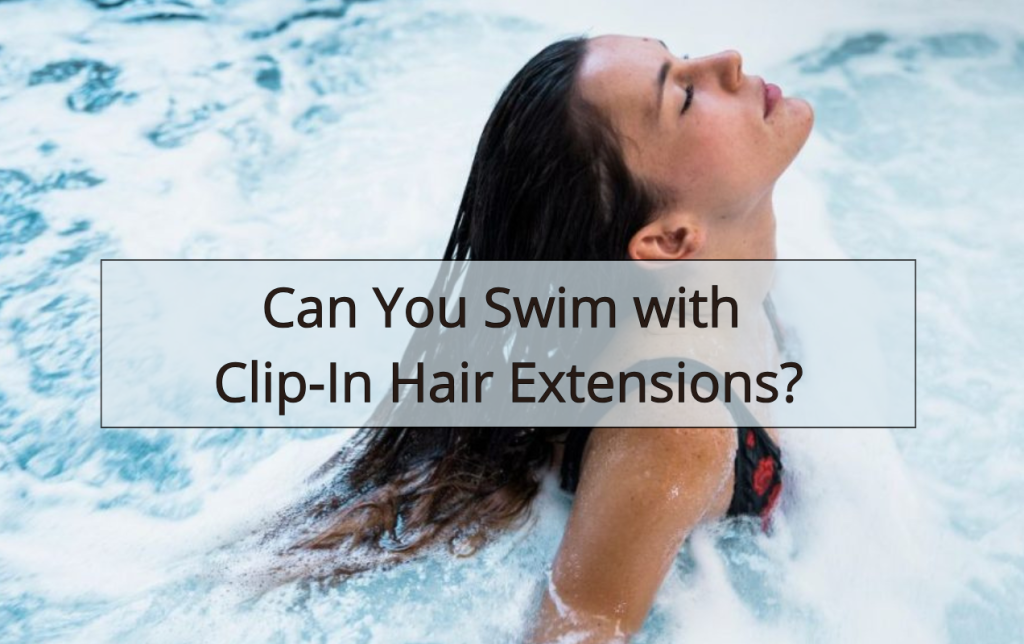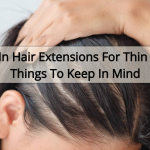Hair Care Tips
Can You Swim with Clip-In Hair Extensions?
Clip-in hair extensions are a go-to choice for flexibility and style, but many users still wonder: can you swim with clip in hair extensions? Whether you’re heading to a pool party or beach vacation, it’s crucial to understand how water affects your extensions and how to protect them properly. In this article, we’ll break down everything you need to know before diving in—literally.
1. Understanding Clip-In Hair Extensions
Clip-in extensions are wefts of hair attached to small pressure-sensitive clips. They are designed for temporary wear and are usually removed before sleeping, showering, or intense physical activity. Unlike semi-permanent methods like tape-ins or keratin bonds, clip-ins are not intended to stay in place 24/7.
🟢 Pros: Easy to install and remove, non-damaging, budget-friendly
🔴 Limitations: Not water-resistant, prone to slipping or tangling if worn during swimming
2. So, Can You Swim with Clip-In Hair Extensions?
Technically, yes—but it’s not recommended.
Clip-ins are not designed to withstand water, especially in chlorinated pools or saltwater environments. Water exposure can cause several issues:
-
Slippage: Water weakens the grip of the clips, causing them to loosen or fall out mid-swim.
-
Tangles & Matting: Wet hair tangles easily, and combined with movement in water, clip-ins can become severely knotted.
-
Damage to Hair Fibers: Chlorine and saltwater dry out both your natural hair and the extensions, especially if they are made of human hair.
-
Rusting Clips: Some metal clips can corrode or rust when frequently exposed to water.
🔍 Conclusion: If you must swim, it’s safer to remove your clip-ins beforehand.
3. What Happens If You Swim with Clip-In Extensions?
If you do choose to swim with clip-in extensions, be prepared for the following consequences:
-
Hair matting and frizz: Difficult to detangle afterward
-
Product buildup: Chlorine or salt residue is harder to rinse from attached wefts
-
Color fading: Especially for dyed human hair extensions
-
Clip damage: Metal parts may corrode over time
This is particularly risky with longer wefts or multi-piece full-head sets, where tangling and slippage are more likely.
4. Precautionary Tips If You Must Swim
If removing them isn’t an option, take these steps to minimize damage:
-
Use a Swim Cap: Tuck your hair tightly inside a silicone cap to avoid direct water contact.
-
Braid Your Hair: Secure the extensions in a loose braid to reduce tangling.
-
Avoid Diving or Vigorous Movement: To prevent the clips from dislodging.
-
Rinse Immediately After Swimming: With clean, fresh water to remove chemicals and salt.
-
Use Leave-in Conditioner: To create a protective barrier on the hair surface.
🚫 Note: These are damage-control steps, not long-term solutions.
5. Alternative Options for Swimming
If you’re a regular swimmer or planning a beach trip, consider these alternatives:
-
Wear a Human Hair Wig: Easily removed post-swim and easier to protect.
-
Switch to Semi-Permanent Extensions: Such as tape-ins or micro rings, which offer better water resistance.
-
Go Natural: Style your own hair in protective braids or buns and save your clip-ins for dry days.
6. Final Verdict: Should You Swim with Clip-In Hair Extensions?
No, not if you want to maintain their quality and longevity. Clip-in extensions are a styling solution—not a swim-proof accessory. Water, especially chlorinated or salty, accelerates wear, causes slippage, and can permanently damage both the extensions and your natural hair.
🧠 Pro Tip: Remove your clip-ins, store them safely, and enjoy the water worry-free. Reinstall once you’re dry and ready to style.
7. Summary
| ✅ Do This | ❌ Avoid This |
|---|---|
| Remove extensions before swimming | Swimming with loose clip-ins |
| Store in a clean, dry place | Exposing clips to salt/chlorine |
| Use leave-in conditioner | Brushing wet extensions roughly |
| Rinse and condition after exposure | Letting them air-dry tangled |
Conclusion
Your clip-in hair extensions are an investment—and like all good investments, they need proper care. While swimming with them is possible, it’s better to take them out to avoid irreversible damage. Protect your hair, protect your look.
Related Articles:
Clip-In Hair Extensions: Everything You Need to Know
Can You Sleep with Clip-In Hair Extensions?





